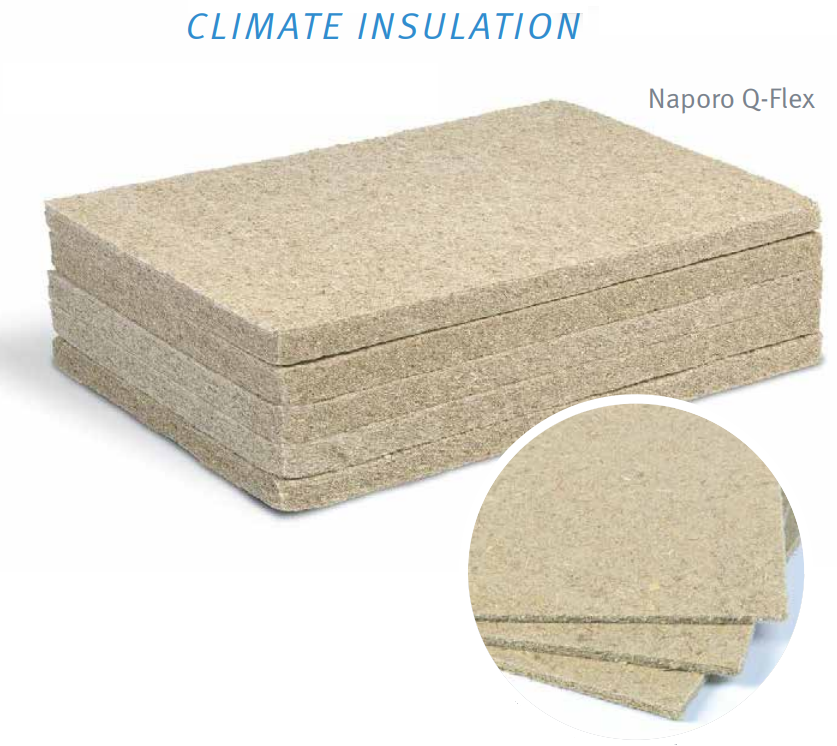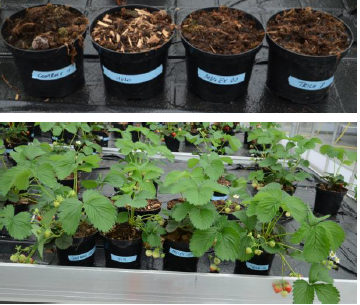Potential of paludiculture crops in Flanders
Abstract¶
Paludiculture is the productive use of rewetted wetlands from the perspective of conserving an essential ecosystem that is currently being used for conventional agriculture, but with the benefit of being economically attractive. Paludicrops or wet crops can provide several productive uses and environmental services. Their biomass can be used for building materials, animal feed, horticultural substrates, and biofuel production. Paludiculture restores a valuable habitat for endangered species, while offering possibilities for animal husbandry and pharmaceutical industries. Environmental services include water purification and retention, carbon sequestration and greenhouse gas emissions mitigation.
Countries like The Netherlands and Germany have significant experience with paludiculture. Cattail (Typha sp.), reed (Phragmites australis) and peat moss (Sphagnum sp.) are the most promising crops because they have multiple uses and offer several market opportunities. In Flanders, paludiculture is poorly known and most of the research has been focused on Miscanthus (Miscanthus x giganteus) as bulk material for sustainable growing media, or for biofuel production. Miscanthus seems to be more productive and persistent under Belgian conditions compared to other paludicrops, although propagation is still costly due to rhizome preparation. Willow (Salix sp.) has also showed their potential in Flanders within Agroforestry for animal shelter, and is under ongoing research with the purpose of being used as a natural barrier.
Although there is certainly potential in these ‘new’ crops, paludiculture is an emerging and not very well known type of farming, and therefore there is still lack of knowledge and awareness from governments, farmers and customers about their benefits. Most of the limitations are related to cultivation practices and adapted machinery, market opportunities, and regulations and incentives. Nonetheless, there is a growing ideology towards more sustainable practices and bio based alternatives within industries, and the EU missions (Horizon Europe) have ambitious goals to reduce net GHG emissions from drained peatlands. This certainly opens big opportunities for paludicrops in the future.
Experience gained in neighboring countries can be used in Flanders as a baseline for continuing research and creating appropriate market opportunities according to the Flemish context. In Flanders, fragmentation of the agricultural area can be a limiting factor for paludiculture to become profitable in industrial applications. In that case, the focus in Flanders could be on local processing and use and circular agricultural models.
Introduction¶
Paludiculture (Latin ‘palus’ = swamp), is the productive use of rewetted wetlands, from the perspective of conserving an essential ecosystem but being economically attractive. Peatlands are a special type of wetland characterized by having a naturally accumulated peat soil layer in the surface, formed from the slow plant decomposition over the years under waterlogged conditions De La Haye et al., 2021. The peat soil is therefore a huge carbon storage, which is known to release roughly 1.9 gigatonnes of CO2 annually to the atmosphere due to their degradation IUCN, 2021. Instead of draining peatland areas to make way for conventional agriculture or extracting peat soil for substrate in horticulture or garden use, paludiculture aims to keep the productive function of the peatland De La Haye et al., 2021. This is achieved by cultivating crops that can thrive in temporarily or permanent wet or even flooded conditions, and thus preserving the ecosystem services of wetlands Wichtmann et al., 2016.
Plants can adapt to wet conditions (oxygen stress) in different ways; by developing aerenchyma to provide gas exchange between aerobic shoots and anaerobic roots, by stem enlargement (hypertrophy), producing a radial root oxygen barrier or by adventitious root formation Kaur et al., 2020. Most of the arable crops are sensitive to very wet conditions (see previous chapter) as they cannot develop those adaptations. Perennial grasses and pasture legumes can be more tolerant to transient waterlogging compared to arable crops, but they do not resist permanent soil saturation or flooded conditions Moore et al., 1998. Paludicrops are rather more appropriate for rewetted wetlands. Their cultivation for biomass production and new market opportunities has been largely explored in Europe, under mainly the framework of climate change mitigation De La Haye et al., 2021Duursen & al., 2016.
Wet crops can deliver a wide range of productive and environmental services. In rewetted wetlands, greenhouse gasses emissions depend on oxygen and nutrient availability in the soil Collins et al., 2019. Under aerobic conditions (water levels below the soil surface), carbon dioxide (CO2) and nitrous oxide (N2O) are emitted, resulting from the decomposition of the organic matter. In anoxic conditions (water levels above the soil surface), CO2 and N2O emissions are reduced significantly but part of the organic matter is broken down to methane CH4) due to methane-producing bacteria Emsens et al., 2019Wilson et al., 2016. Despite CH4 emissions are low compared to CO2, this gas is about 25 times more potent than CO2 Emsens et al., 2019. Some paludicrops like cattail (typha sp.) and reed (phragmites) can release oxygen in the soil under flooded conditions which can reduce CH4 formation. Other crops like peat moss (sphagnum sp.) can sequester CO2 producing even negative greenhouse gases rates Collins et al., 2019. Cattail and reed also need high nutrient availability; therefore, they can act as water purifiers and increase the water retention capacity in the wetland Collins et al., 2019Vroom et al., 2018. The biomass of most paludicrops can be used for several purposes: building materials, insulation, animal feed, growing substrates, raw material for paper production, composting and biofuel Collins et al., 2019.
Paludiculture presents however some limitations regarding cultivation practices, market opportunities and regulations. There have been proposed different business models including horticultural substrates production, adapted dairy farming combined with paludiculture, and carbon-credit schemes Collins et al., 2019. However, this new type of farming is still new and currently under ongoing research. There is currently a lack of certainty regarding market opportunities and regulations, with which farmers have to struggle Collins et al., 2019De La Haye et al., 2021; however, this will likely improve as the system develops.
In this chapter, we give an overview of paludiculture crops with potential in the Flemish context. We start with a general overview and ongoing research, and then zoom in on the most promising crops for the Flemish context. We finish with a discussion on the knowledge gaps for further research.
Overview of paludiculture crops¶
The Database of Potential Paludiculture Plants (DPPP) Abel et al., 2013 lists more than 1100 plants suitable for paludiculture, from which 469 are considered “good” because they can be economically valuable. Most of the crops are perennial and grow in soils with a water table of about 20 cm below soil surface. Examples of these crops are peat moss (sphagnum sp.), cattail (typha sp.), reed (phragmites), and willow (salix sp.). Collins et al. (2019) presents a nice overview of potential paludicrops, their products and opportunities for Carbon and Blue credits, based on an extensive literature review (Table 1), in the framework of the Carbon Connects project.
As Table 1 shows, each crop requires a specific groundwater regime to obtain maximum growth and environmental benefits. For most paludicrops, a water level that fluctuates around -20 cm or even higher is more efficient from the CO2 emission point of view. Optimal water level can be around 40 cm below the soil surface for peat moss or giant cane, while it can be up to 1 m above soil surface in the case of cattail and reed. Other crops like cranberry and willow do well in a wider range of water levels and can tolerate soil water fluctuations Bestman et al., 2019.
Table 1:Overview of important paludicrops, products and potential for C-credits and Blue-credits. C-credits potential is based on estimates of GHG-emission reductions: ++ very high potential, + high potential, 0 little potential, - no potential. Potential for blue credits is based on water purification and storage Collins et al., 2019.
Crop | Water level (cm) | Products | Carbon credits | Blue credits |
|---|---|---|---|---|
Alder (Alnus sp.) | -40 to +5 | Wood | ++ | Storage:++ |
Cattail (Typha sp.) | 0 to +20 | Animal fodder Insulation and building material Potting soil Feed for pest-controlling predatory mites Food | + | Purification:+ Storage: ++ |
Giant cane (Arundo donax) | -40 to 0 | Building material Combustion/biogas | 0/+ | Purification:++ Storage:++ |
Peat moss (Sphagnum sp.) | -15 to -5 | Substrate in horticulture | ++ | Purification:+ Storage:+/0 |
Reed (Phragmites) | -20 to +20 | Roofing material Combustion/biogas | ++ | Purification:++ Storage:++ |
Reed canary grass (Phalaris arundinacea) | -30 to +10 | Combustion/biogas | + | Purification:+/0 Storage:+ |
Sedge (Carex sp.) | -40 to +20 | Combustion/biogas | ++ | Purification:+ Storage:+ |
Sundew (Drosera sp.) | -20 to 0 | Medicine | ++ | Purification:0 storage:0/+ |
Sweet flag (Acorus calamus) | -30 to +10 | Herb and medicine | + | Purification:+ Storage:+ |
Water fern (Azolla sp.) | >+5 | Animal fodder Protein | 0 | Purification:+ Storage:++ |
Wild rice (Zizania sp.) | 0 to +20 | Food | + | Purification:++ Storage:+ |
Willow (Salix sp.) | -40 to +20 | Wood | 0/+ | Purification:+ Storage:++ |
Yellow iris (Iris pseudacorus) | -40 to +10 | Flowers | + | Purification:++ Storage:+ |
Benefits and shortcomings¶
In Europe, there are different ongoing projects focused on peatland restoration and paludiculture as an innovative and profitable alternative for natural vegetation upon rewetting of wetlands, such as Carbon Connects, Care-Peat, DESIRE, LIFE Peat Restore and CANAPE De La Haye et al., 2021. This goes in line with the goals of the European Green Deal, which aims to reduce net greenhouse gas emissions by at least 55 % by 2030. Many benefits exist from the cultivation of paludicrops. The most promising crop is cattail (Thypa sp.) for building materials, biofuels, animal feed De La Haye et al., 2021Jong et al., 2021 and peat replacement in horticultural substrates Leiber-Sauheitl et al., 2021Hartung & Meinken, 2021(EDR), 2022. From the Climate Change perspective, cattail cultivation has the potential to reduce CO2 emissions due to peatland conservation Jong et al., 2021. Cattail has extra environmental benefits compared to other bio-based materials because it can be used to absorb pollutants and purify water Belle (2021), and therefore is more preferred in the market. However, CH4 emissions may be high in cattail since water levels have to be kept above ground level (0-20 cm) to have optimal yields IPV, 2022. Another crop being explored for water purification is duckweed fern (azolla sp.) in the project Innovatie Programma Veen Duursen et al., 2016 in North Holland. Nutrients removed from the water and converted into crop biomass can be used as compost or animal feed Belle, 2021. Peat moss has also being researched as an alternative to peat substrate in the project MOOSzucht in Germany, and for increasing the carbon storage capacity of the peat De La Haye et al., 2021, also as a decorative material Duursen & al. (2016) and lining for exotic animal terrariums in the project CANAPE.
Ziegler et al. (2021) stated that paludiculture is an emerging and science-driven innovation around the world and especially in Europe; however, it has to face several limitations regarding lack of economic viability, knowledge, subsidies and regulations. Although considerable research has been devoted to maximize the potential of paludiculture with the purpose of increasing agriculture sustainability and contribute to a bio-based economy, governments, farmers and customers are still not fully aware of this new technique and their environmental benefits Collins et al., 2019. The market is still new and developing, adapted machinery is missing, and therefore, most of the production is at small scale or within research/pilot projects. Paludiculture is not competitive with traditional drained-agriculture and subsidies and incentives are fundamental to make this market profitable Ziegler et al., 2021. The lack of regulations and clear prospect of paludiculture discourage farmers to adopt this new type of farming and companies to use paludicrops as raw material Collins et al., 2019De La Haye et al., 2021.
Figure 1 summarizes the main benefits and shortcomings of paludiculture encountered in several pilot projects and studies across Europe Collins et al., 2019Ziegler et al., 2021Duursen et al., 2016Geurts & Fritz, 2018.
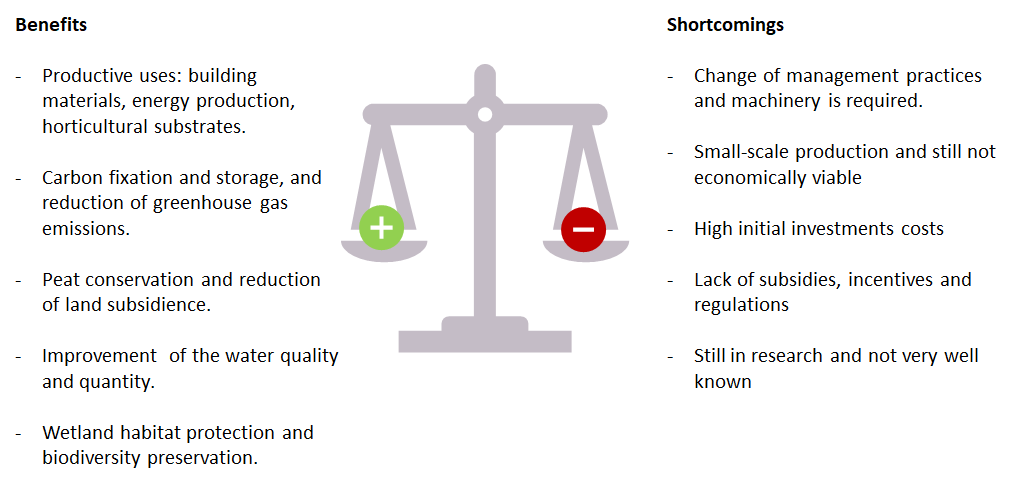
Figure 1:Benefits and shortcomings of Paludiculture
Potential uses of paludicrops¶
Wet crops can provide several productive uses and environmental services that can be economically attractive (Figure 2). Their biomass can be used for building materials, insulation, animal feed, growing substrates and composting, and biofuel production. Environmental services include water purification, carbon sequestration and water retention capacity increase in the wetland Wichtmann et al., 2016. Paludiculture also recreates a valuable habitat for endangered species Greifswald Mire Center, 2015. Paludiculture offers the possibility to be combined with other industries, like meat with water buffalo, or medicine with medicinal plants Greifswald Mire Center, 2015. While these potential services have already been identified in the literature, the viability of the crops for farmers depends on the available markets and their stability as well as on investments necessary to cultivate and harvest those crops.
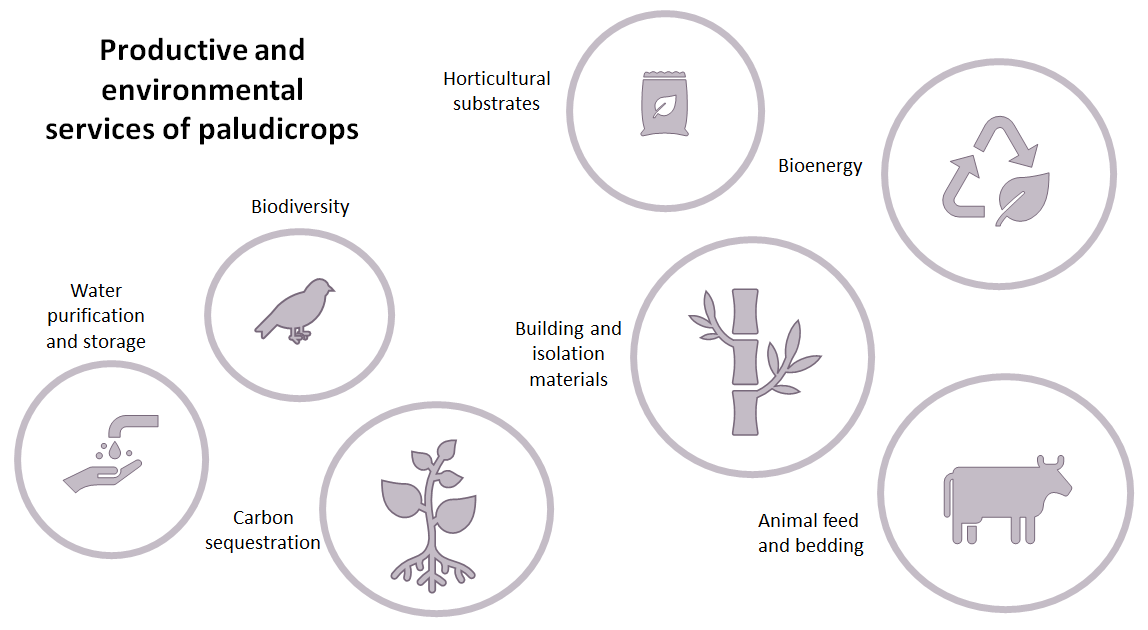
Figure 2:Main productive and environmental services from paludicrops.
Productive uses¶
Building and isolation materials¶
Wet crops can be used as raw products for building and isolation materials. The main requirements for bio based constructions and insulation materials are light weight, fire retardance, resistance to biotic factors like mold and fungus, and not to emit harmful substances Bestman et al., 2019. Different products can be produced based on crop fibers like fiber boards, insulation panels for walls, floors and roofs, and paper Collins et al., 2019. Crops like cattail, miscanthus and reed have good insolation characteristics due to air cavities in the leaves and branches, high durability and strength. The time of harvesting is important in the biomass quality, for building materials it normally occurs in winter or early spring where the moisture content is low Bestman et al., 2019.
Horticultural substrates¶
Paludicrops can be used as peat alternatives in sustainable growing media in horticulture. Currently, there is a high demand of new and more sustainable alternatives to peat in horticulture due to excessive CO2 emission from drained peatlands Duursen et al., 2016. Peat moss is the most fitting one thanks to its similar chemical and physical characteristics compared to peat. Miscanthus, reed and soft rush can also be suitable after some optimization treatments Vandecasteele et al., 2018Vandecasteele et al., 2021.
Animal feed and bedding¶
Wet crops can be a good source of nutrients for animal feed. When harvesting before the flowering period, the green leaves contain adequate levels of protein and are easily digestible. Normally cattail and willow can be used as supplementary or complementary food for ruminants Bestman et al., 2019. Dry straws from some paludicrops (e.g. cattail, miscanthus) harvested in winter or early spring are also very suitable for animal bedding. They have a good water absorption capacity and do not promote bacterial growth and skin lesions, important for the general comfort of the animals Bestman et al., 2019Van Weyenberg et al., 2016.
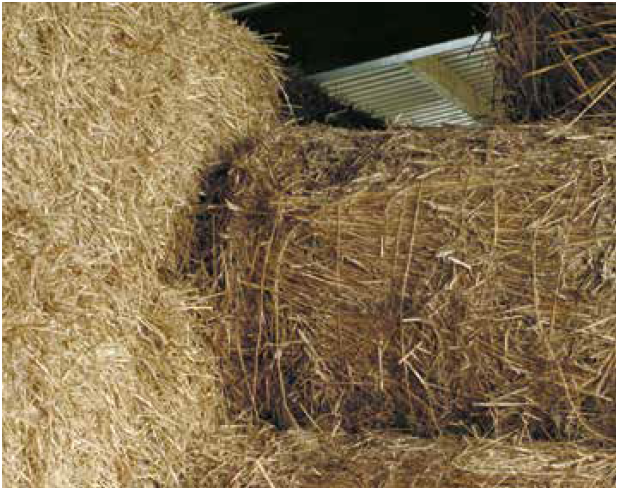
Figure 5:Dry reed used for animal bedding Bestman et al., 2019
Energy production¶
Bio-energy for heat and electricity production is considered one of the most profitable uses for some paludicrops like miscanthus and reed. Currently, the limited fossil fuel available is highly expensive, and there is a trend for switching to more climate-friendly alternatives Waegebaert & Mey, 2019Köbbing et al., 2013. Winter-harvested biomass is used for this purpose, because the moisture content is low and the leaves have already fallen. Leaves contain potassium and chloride, which corrode the equipment, and produce more ashes during combustion Bestman et al., 2019Köbbing et al., 2013.
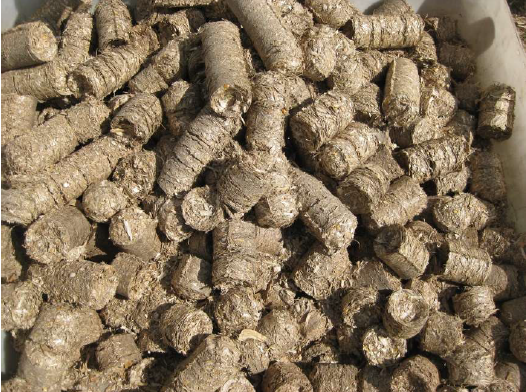
Figure 6:Miscanthus pellets for biofuel Waegebaert & Mey, 2019
Environmental services¶
Water purification and water storage¶
Paludicrops can potentially be used to extract excess nutrients from agricultural lands or nutrient-rich ditch water. Nutrients like nitrogen and phosphates are absorbed by the roots and used for biomass production. In summer, most of these nutrients are stored in the above ground biomass, while in winter the nutrients are placed in the roots. Crops like cattail and reed can absorb large amounts of nitrogen, phosphorus and potassium, leading to a high nutrient biomass. Wet crops can allow to store the surplus water during precipitation events ( e.g. cattail). For water storage possibilities, the selection of suitable crops is critical, as no all paludicrops can withstand flooded conditions Bestman et al., 2019.
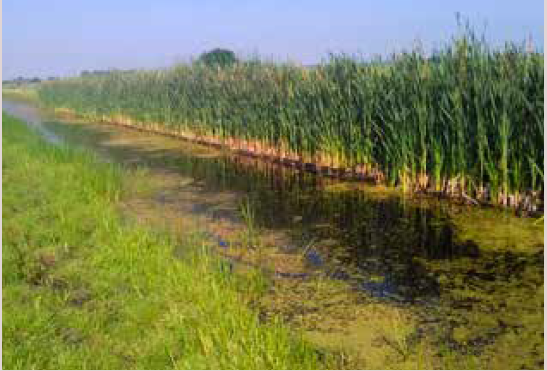
Figure 7:Cattail in ditch sides in a dairy farm to absorb the nutrient-rich run-off Bestman et al., 2019
Carbon sequestration and peat conservation¶
One of the main purposes of paludicrops is the reduction of greenhouse gas emissions for drained peatlands by rewetting them, creating anaerobic conditions and thus reducing CO2 and N2O emissions. CH4 emissions can increase under wet conditions, but paludiculture crops also ensure that methane emissions remain lower in some cases. Wet crops are able to capture carbon and storage it in the roots and biomass. In building materials, the carbon remains fixed during the life of the material, while in applications such as animal feed some of it will re-enter the atmosphere after decomposition. Some crops like reed and peat moss can help to also increase the peat layer Collins et al., 2019Bestman et al., 2019.
Nature conservation and biodiversity¶
Establishing the optimal water tables makes a shift from a terrestrial ecosystem to an aquatic ecosystem. By allowing wet plant species to spontaneously develop, help to restore a variety of habitats for endangered species like the Aquatic Warbler (Figure 8) and Greater Spotted Eagle Greifswald Mire Center, 2015. In protected areas, some regulations for nature conservation have to be respected, to avoid a conflict between biomass production, water purification and nature conservation. Very dense vegetation is desired for maximum absorption of nutrients but this can hinder the mobility of aquatic animals. Furthermore, mowing has to be done outside of the breeding seasons Belle, 2021.
According to LIFE Multi Peat, wet crops can also serve as a buffer between agricultural areas and nature conservation areas. In this way, high water levels from wetlands are less influential in agricultural lands, and nature is more protected against the negative effects of nearby agriculture (e.g. leaching).

Figure 8:The globally endangered Aquatic Warbler breeds in the ground of aquatic meadows Greifswald Mire Center, 2015
Paludiculture exploration in Flanders¶
Table 2 summarizes some of the projects regarding paludiculture in Flanders and their main results. In Flanders, most of the research has been focused on Miscanthus (Miscanthus x giganteus) and their potential as bulk material for sustainable growing media Vandecasteele et al., 2018. Soft rush (Juncus effusus) has also been studied as an alternative horticultural substrate Vandecasteele et al., 2021. Other explored possibilities for miscanthus included their use as bio-based raw materials for biofuel, paper production, packaging, or as a natural weed killer, and a complete guide exists for their cultivation Waegebaert & Mey, 2019. Additional studied uses are alternatives for bedding material for dairy cows Van Weyenberg et al. (2016), and sustainable biomass for energy production Hulle et al., 2012.
When comparing with other perennial crops such us reed canary grass, switchgrass and willow; Miscanthus (Miscanthus x giganteus) seems to be more productive and persistent under Belgian conditions Hulle et al., 2012, although the energy use efficiency is lower due to rhizome preparation Muylle et al., 2015. To solve this problem and to find other high yielding and stress-tolerant varieties of Miscanthus, around 100 miscanthus genotypes were tested under abiotic stresses (cold, drought and salinity) for biomass optimization Lewandowski et al., 2016. Several new genotypes were identified that can adapt to specific conditions, but the currently commercial genotype Miscanthus x giganteus is still a feasible option for many locations and conditions.
Other projects briefly analyzed the option of paludiculture but it remained only in possibilities or was not suitable. In the rewetting project in the valley of the Zwarte Beek in Limburg, the largest peat bog complex in Flanders, results indicated that under iron and phosphorus-rich wet soils, the predominant vegetation consisted on different species of sedges, and peat moss in the more acidic places Emsens et al., 2019. Although, paludiculture was not evaluated here, sedge (Carex sp.) has high potential for biofuel production and possibilities for carbon credits (Table 1). In the ongoing project LIFE Multi Peat, in the valley of the Grote Beek also in Limburg, paludiculture with willows is intended to be implemented as a measure for peatland restoration. Willows are planned to be used as a buffer between wet nature and agricultural lands, and maybe also for biomass, cattle food, stable litter or isolation. Finally, reed, cattail and duckweed were part of the business models proposed to face the water problems in the Livestock farm Hoeve De Waterkant, within the Productive Landscape Pilot Projects. However, paludiculture seemed to be unsuitable in this case due to large investment costs for the farmer, the lack of compensation for blue services and the absence of sufficient market opportunities.
Table 2:Overview of main paludiculture projects in Flanders and their outcomes.
Project/research | Scope | Paludicrops | Results |
|---|---|---|---|
Reduce the high carbon footprint of peatland soils in Northwest Europe by introducing new bio-based business models developed for sustainable land management practices. Two pilot projects in West Flanders. | Willow Pitrus Reed | Intended applications of paludiculture involves the use of biomass for on-farm composting and their subsequent use in arable lands, and animal bedding. | |
Produce an innovative peat replacement with disease and/or pest suppressing properties, based on locally available plant fibers. | Miscanthus Reed | +++ Defibrated plant fibers showed low N fixation and were easily colonized by biocontrol fungi. | |
Maximize the potential of heath management residues and/or their micro-organisms in the production of bio-active substrates and disease-suppressing additives for open field, forest greenery and acid-loving crops. | Soft rush | ++ After acidification, chopped soft rush was more stable (i.e. low oxygen uptake rate, CO2 flux and water extractable C) indicating their high potential for substrate blends. | |
Contribute to a bio-based economy by growing raw materials that can also be processed locally into an end product. | Miscanthus | +++ Miscanthus resulted attractive because it has several use possibilities (biofuel, construction materials), high biomass yield and low investment costs. | |
Yield and energy balance of annual and perennial lignocellulosic crops for bio-refinery use | Compare yield potential and energetic balance for bio-refinery | Miscanthus Reed Reed canary grass Willow | ++ Miscanthus is high yielding but willow is more energy use efficient. |
Optimize the production and use of Miscanthus biomass, and to develop new high-value applications. | Miscanthus | ++ Other varieties like M.sinensis × M. sacchariflorus hybrids appeared to perform better than the commercially known variety Miscanthus x giganteous in certain locations. Although this is on average very suitable for all locations. | |
Combine innovative business operations with a qualitative interaction with the landscape and society. | Reed Cattail Duckweed | - Paludiculture not feasible due to large investment costs, the lack of compensation for blue services and the absence of sufficient market opportunities. | |
LIFE Multi Peat (European LIFE Climate Change Mitigation project) | Focus on climate impact of nature reserves by restoring peatlands and monitoring their greenhouse gasses emission/uptake. Part of the project involves the restoration of the valley of the Grote Beek in Limburg by stablishing paludiculture. | Willow | It is expected that willows can serve as a barrier between wet nature and agricultural lands. Other environmental services could be water purification and pollination. |
Paludicrops with potential for cultivation in Flanders¶
Paludiculture is poorly known in Belgium and the research is still in its infancy. Other countries like The Netherlands and Germany have been intensively researching new sustainable and profitable agricultural activities in the peat meadow areas that minimize land subsidence, reduce greenhouse gas emissions from peatlands and improve water quality in the areas nearby agricultural polders Bestman et al., 2019Duursen et al., 2016IPV, 2022Wichmann, 2018. Cattail, azolla and peat moss seem to be the most promising crops because they have multiple uses and offer several market opportunities Duursen et al., 2016. Cattail and reed are the most interesting crops in dairy farming according to Bestman et al. (2019), because they have the capacity to absorb significant amount of nutrients, so they can become high nutritional crops for animal feed. Although, the crop is converted back into CO2 and CH4 when using as animal feed IPV, 2022; therefore, other uses like building and isolation materials are preferred from the climate change perspective. Miscanthus has potential for being used in horticultural substrates and bioenergy, and some experience is already available in Flanders Waegebaert & Mey, 2019. Willow has been also explored in Flanders within Agroforestry Bracke et al., 2020 and is just being researched in the project LIFE Multi Peat focused on environmental services.
On the other hand, final conclusions of pilot projects point out that there is still a long way to go in paludiculture due to insufficient and variable crop production to meet demands, lack of cultivation knowledge, and inconsistencies between regulations and wet cultivation implementation in the European agricultural system IPV, 2022. Paludiculture market is still small and it is unclear which revenue models are more efficient, especially in Flanders where studies are not available. Profitability would be possible if several uses are combined and if paludiculture is eligible for wetland agricultural payments within the Common Agricultural Policy (CAP) IPV, 2022. Nonetheless, there is a growing ideology towards more sustainable practices and bio-based alternatives, in the construction, bioenergy and animal sectors. The EU missions have ambitious goals to reduce net GHG emissions by 55 % by 2030; therefore, conservation of soil organic carbon stocks involving among others peatland restoration and paludiculture, is part of the innovative actions to meet this target. Simultaneously, the necessary policies, regulations and promotion will also be developed to facilitate and encourage the societal uptake of the new solutions and approaches. This certainly offers high opportunities for paludicrops in the future.
Although there is certainly potential in these ‘new’ crops, currently there is insufficient research on the Flemish market potential, the value-chain and its robustness. Valuable and positive experience gained in neighboring countries can be used as inspiration for continuing research and creating market opportunities in Flanders. Some areas can have similar conditions to the peat meadow areas in The Netherlands, but fragmentation of the agricultural area can be a limiting factor for industrial applications to become profitable. According to a discussion open in the Vlaamse Parlement Talpe & Crevits, 2021, revenue models based on local cultivation and processing can be more suitable in the Flemish context.
Below, the main characteristics, potential uses and limitations are presented for cattail, miscanthus, peat moss, reed and willow.
Cattail (Typha sp.)¶
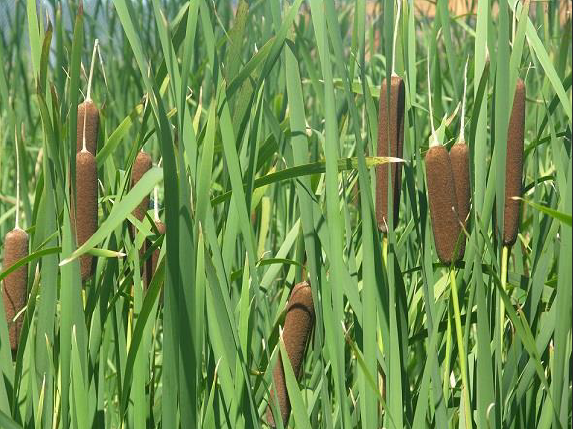
Figure 9:Cattail with its typical “cigar” Duursen et al., 2016
Cattail (Typha spp.) is a perennial crop from the bulrush family (Typhaceae) that grow naturally in wetlands, nutrient-rich banks, on peat soils and shallow pools, from 1.5 to 3 meters high Duursen et al., 2016. The most common variety is typha latifolia or large bulrush. Cattail multiplies by seed and rhizome and can form dense vegetation under favorable conditions Morton, 1975. This plant has a distinctive “cigar” or flower that contain the seeds; once they are ripe, the “cigar” disintegrates to disperse the seeds. The leaves are flat and similar to grass Morton, 1975Duursen & al., 2016. Cattail thrives better in high water levels (+20 cm), biomass is smaller in winter than in summer due to dehydration and dry leaf drop. The dry matter yield ranges from 4 to 20 ton ha-1, which can be enhanced by addition of nitrogen Bestman et al., 2019. Harvesting depends on the foreseen application, it is done in spring before flowering if used as roughage, or after flowering for structured feed, pollen production or insulation material. For building materials or bedding, harvesting is done in winter Bestman et al., 2019.
Potential uses¶
Cattail has some characteristics that make it excellent for insulation and construction materials and it is the most interesting use nowadays. It has a long-tear resistant fiber and around 85 % of spongy fiber, the insulation capacity is as good as typical insulation materials due its low thermal conductivity coefficient. Cattail is also fire-resistant and light weight, which is an advantage in the construction of ceilings and roofs. The high polyphenols content in bulrush protect the materials from fungi or insects and therefore little additives are required in the building materials. Carbon content in the plant remains fixed in the whole production process and in the building materials, important from the carbon footprint and for avoiding emissions of harmful substances as it happens in some synthetic materials Duursen & al. (2016).
Cattail can be used as supplementary animal feed, both fresh or in silage. For using as roughage, harvesting during the growing season and before the flowering period allow to conserve at maximum the nutritional levels of the plant and to have acceptable protein content and moderate fiber. The digestibility of the organic matter is around 70 % and the protein content is 120 g kg-1 DM, compared with 79 % and 183 g kg-1 DM in fresh grass Bestman et al., 2019. Some nutritional benefits include high selenium content, which is normally low in common grass, and high manganese content. Cattail is however poor in phosphorous, magnesium and zinc Bestman et al., 2019. When used as animal feed, carbon is converted back into CO2 and CH4 IPV, 2022. Cattail can be also used as animal bedding, since it has a comparatively high water absorption of around 3.2 ml g-1 bedding material, compared to 4 - 4.5 ml g-1 in usual bedding materials Bestman et al., 2019.
Cattail is very productive and can absorb significant amounts of carbon, nitrogen, phosphorus and potassium and dispose them at harvest Belle, 2021. Cultivation of cattail for high biomass production combined with other environmental services like water purification and storage, nutrient removal and peat preservation is possible and can be profitable Geurts et al., 2020. According to Geurts et al. (2020), based on a biomass production of at least 10 ton DM ha-1, carbon sequestration ranges between 4 - 14 ton C ha-1, and nutrient removal between 100-500 kg N ha-1, 20-80 Kg P ha-1 and 100-450 kg K ha-1. Since cattail prefers flooded conditions, methane emissions may increase, which lower its potential for climate change mitigation IPV, 2022. However, Vroom et al. (2018) found that cattail strongly reduced CH4 emissions in rewetted peatlands compared to conditions without vegetation. The reduction of CO2 emissions in rewetted peatlands ( -21.6 ton CO2-eq ha-1) normally offset CH4 emissions and make cattail cultivation (and other wet crops ) still very attractive Jong et al., 2021.
Other possible uses, less explored but with high-quality applications include pollen production for predatory mites Samaras et al., 2019 or for medicinal purposes, and cattail cultivation for bioenergy Bestman et al., 2019.
Limitations¶
Cultivation of cattail is still difficult because of lack of knowledge and experience; for example, pests can sometimes decrease significantly the expected yield IPV, 2022. Currently, the demand is higher than the available production, which prevents the market to expand. This is mainly due to high investments costs, low revenue models and the lack of carbon credits, which also makes cattail not competitive with dairy farming Jong et al., 2021. Potential uses can sometimes impossible to be combined; for example, biomass production for construction materials can not be used together with animal feeding or pollen production, which decreases the profitability. Also, there is a trade-off between yield and methane emissions. CH4 emission can decrease significantly in lower water levels at expense of a smaller yield. Finally, current pollen extracts markets are dominated by Chinese companies, with low prices although poor quality. Western companies cannot compete with these prices and further research is still needed. The production of pollen for medicinal applications is also not feasible because it is not registered as official medicine in Europe Duursen et al., 2016.
Examples¶
- Naporo Klima Dämmstoff GmbH (Austria): utilizes cattail for the production of ecological climate active insulation materials Duursen et al., 2016.
- EcoScala (The Netherlands): construction materials made with cattail.
- Typha Technik (Germany): insulating materials with cattail Duursen et al., 2016
Elephant grass (Miscanthus giganteus)¶

Figure 10:Miscanthus. Source: Ghent University
Miscanthus (commonly known as Elephant Grass) is a high yielding perennial crop that grows over 3 meters tall. A dense and extensive root system is formed during the first 2-3 years after planting; in this period, the yield is rather low and therefore not harvested. Propagation of miscanthus is mainly through rhizomes (subterranean stems from where roots and shoots come out) that grow in the first 25 cm of the top soil Waegebaert & Mey, 2019. Planting is done during spring with 1 or two rhizomes/m2. Planting is a sensitive period and therefore tillage, moisture content, and weed control are important in this phase Waegebaert & Mey, 2019. After three years of establishment, harvesting can be done once a year in autumn or spring. The yield varies from 20 to 50 ton ha-1 yr-1 for early harvest, and from 10 to 30 ton ha-1 yr-1 for late harvest Ben Fradj et al., 2020. In Flanders, the expected dry matter yield is 20 ton ha-1 Waegebaert & Mey, 2019.
Miscanthus has low soil nutrients and pesticides requirements, and can be grown in marginal lands Waegebaert & Mey, 2019Lewandowski et al., 2000, but it is sensitive to compacted soils and flooding. The crop performs better at water levels lower than 20 cm below the soil surface Bestman et al., 2019. Overall, the rapid growth and high biomass yield after establishment, the low maintenance and the ease of cultivation of Miscanthus make it a good choice as a biofuel, outperforming maize and other bioenergy crops Waegebaert & Mey, 2019SEIL, 2012.
Potential uses¶
Currently, the most profitable use for miscanthus is their use as biofuel for heat and electricity production. The limited fossil fuel availability and high energy prices open new opportunities for energy crops like miscanthus Waegebaert & Mey, 2019Muylle et al., 2015Ben Fradj et al., 2020. Under Flemish conditions, miscanthus can be more productive than other wet crops like reed and willow, for bio-ethanol production Hulle et al., 2012. Miscanthus has a high energy balance compared to other crops like sugar beet or rapeseed. The thick stems can be converted in woody material and used for burning. 1 ton can provide 500 l of heating oil, with low CO2 emissions. After combustion, the ashes can serve as soil fertilizer Waegebaert & Mey, 2019. For this purpose, harvesting of the thick stems is done in winter or early spring, when the amount of potassium and chloride present in the leaves is low and the moisture content is between 15 to 20 %, avoiding further drying steps Waegebaert & Mey, 2019. Currently, farmers in Flanders are advised to plant Miscanthus whenever is possible in very wet or poor soils, where other arable crops like maize are not suitable. An example is the farm Hog Ter Vrijlegem in Flemish Brabant, which has around 1.2 ha of Miscanthus for heat production and subsequent use in the farm. Production of energy even at local scale can be advantageous taking into account that all the oil and natural gas supply in Belgium is imported, and that a strong emphasis is put in Belgium to accelerate its clean energy transition IEA, 2022.
Another potential use is construction material for insulation purposes, fiber boards, paper and cardboard, due to its fiber strength and insulating properties Waegebaert & Mey, 2019. Lime-miscanthus mixtures can be used in the construction of walls, floors and roofs for heating purposes. Miscanthus chips can be also used instead of sand and gravel in new porous-concrete type materials ( e.g. “xiriton”). This new material benefits from the lightness of the fibers and the temperature and sound insulation characteristics Waegebaert & Mey, 2019.
The thick and dry stems (chips) of Miscanthus are good for using in mulching, chicken stables or bedding materials for dairy cows or poultry. Miscanthus chips have high absorption capacity, they dry fast and do not stick together, also can absorb nitrogen which reduces bad odors from ammonia Waegebaert & Mey, 2019. Compared to straw, Miscanthus chips have no differences regarding bacterial growth or animal comfort Van Weyenberg et al., 2016. In the case of mulching, miscanthus chips are also a good option, for controlling weed growth and absorbing excess moisture.
There is a growing interest of obtaining more sustainable horticultural substrates (e.g. Horti-BlueC), where peat can be eliminated or at least replaced. Miscanthus fibers can be used to partially replace peat in growing media after different physical and chemical treatments. Processed plant fibers present low nitrogen fixation and become easily colonized by fungal biocontrol strains, which reduce the need for chemical crop protection Vandecasteele et al., 2018.
Miscanthus can also provide environmental services like carbon sequestration and low greenhouse emissions Waegebaert & Mey, 2019Ben Fradj et al., 2020. Since the crop requires water levels below the soil surface, there is no risk of methane emissions like in cattail cultivation. When the crop is used as a construction material, the carbon remains fixed during the lifetime of the material, which offer possibilities for carbon sequestration Bestman et al., 2019. Finally, miscanthus has an efficient nutrient uptake due to its perennial rhizome system, which contains most of the plant nutrients, and in general does not need nitrogen fertilization Waegebaert & Mey, 2019.
Limitations¶
There is only 20000 ha of Miscanthus in the EU grown for commercial purposes, half of this is in the UK Lewandowski et al., 2016. In Belgium, there were about 268 ha declared in Belgium by 2018 Waegebaert & Mey, 2019. The high investments requirements and the lack of available markets make farmers hesitant to cultivate this crop and just local use is possible. Compared to other common crops, miscanthus is very labour intensive, and also biomass processing for energy production requires more management and follow-up than ordinary fuel or oil boilers Waegebaert & Mey, 2019.
Examples¶
- Promis© Belux (Belgium): supply miscanthus rhizomes and offer full guidance during cultivation and purchase of production.
- Miscanthus Nursery Limited (MNL) (UK): 36 farmer grower shareholders grow fresh rhizome for propagation, harvest and trade. They negotiate themselves end use contracts as well as give advise on all aspects of growing and marketing Miscanthus.
Peat moss (sphagnum sp.)¶
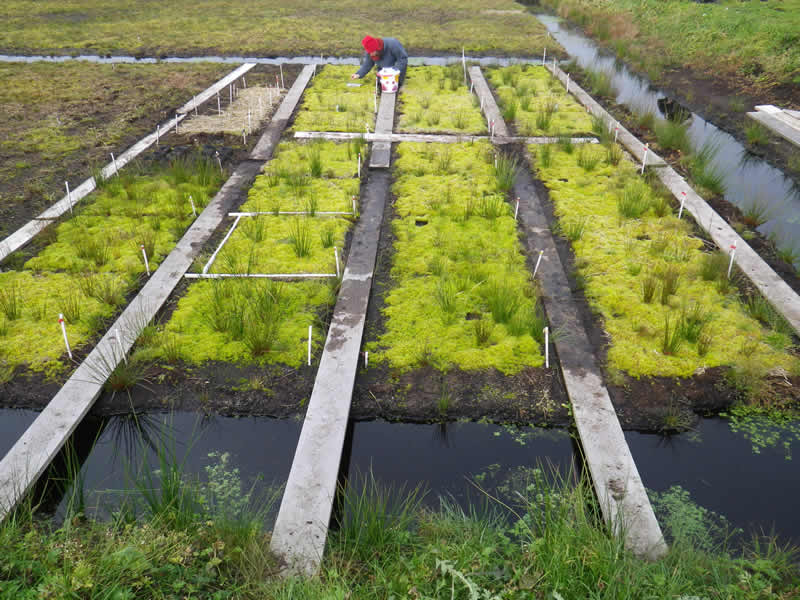
Figure 11:Sphagnum field trial in the project PROSUGA at the University of Greifswald Greifswald Mire Center, 2020
Sphagnum moss is commonly found in swampy areas, it has a great capacity to hold water of up to 16-26 times its own dry weight Duursen et al., 2016. After hundred of years, the slowly humified old peat moss formed the sphagnum peat. Sphagnum farming is the cultivation of this peat moss, for renewable biomass production, peat conservation and reduction of greenhouse gases emissions Greifswald Mire Center, 2020. Peat moss can potentially be cultivated in degraded bog sites which currently are used for grassland, and can provide a sustainable and climate-friendly land use on these bogs, while producing a substitute for peat in horticultural growing media Gaudig et al., 2017. Yield is around 3.5 ton DM ha-1 year-1 according to sphagnum farming sites in Germany Greifswald Mire Center, 2015. Peat moss grows at water levels of about 10 cm below ground surface and permanent and stable wet conditions are fundamental for optimal productivity. Unlike other paludicrops, nutrient-poor soils and acid conditions are preferred to avoid competition with algae or weeds, also low PH Collins et al., 2019. Nutrients are extracted from the water, creating an acidic environment which reduce competition with other plants but also the breakdown of the organic matter, which is the main source of GHG in peatlands Holtuis et al., 2021. Brackish conditions are not suitable for peat moss cultivation IPV, 2022. Propagation of sphagnum is done via fragments or micropropagated plants Collins et al., 2019Gaudig et al., 2017. Harvesting normally can be done all the year around, as long as there are not nature conservation regulations or high water levels Collins et al., 2019.
Potential uses¶
Sphagnum is used and researched primarily for horticultural substrates and potting soils thanks to its similar properties to peat. These properties include structural stability, water retention capacity, airiness, acidity and nutrient and organic matter content. Peat moss is not very well-known but it is already been used in the orchid substrate market Duursen et al., 2016. Producers of agricultural and horticultural substrates are looking for peat alternatives to reduce their carbon footprint CANAPE, 2020. Currently this market is highly competitive because specific product specifications have to be fulfilled, which varies with sphagnum varieties Duursen et al., 2016.
Sphagnum can also be used as decorative material in the short term in flower arrangements and other applications. There is a small but growing market in this area since production quantities, knowledge and investments requirements are clear Duursen et al., 2016. For this purpose, water retention and greenery are fundamental. Other uses include wastewater filtering, biodegradable adsorbent of hydrocarbons, and lining of terrariums CANAPE, 2020.
Limitations¶
As the other paludicrops, sphagnum cultivation limitations relies in the small market opportunities, lack of awareness of producers and consumers, and the fact that further research is needed to find optimal varieties and cultivation methods for different applications. Starting material is currently expensive and higher initial investments are required Duursen et al., 2016 There are just limited pilot/research projects, mostly in Germany (Sphagnum Farm Barver, Ramsloh site), which are still ongoing. Also, the specific growing conditions (i.e. poor-nutrient soils, acidic conditions) does not allow the cultivation of other wet crops, which can be a limiting factor under nature protection laws.
Examples¶
- Bio-Kultura: according to Duursen et al. (2016), this company uses around 20% sphagnum in their substrates.
Reed (Phragmites australis)¶
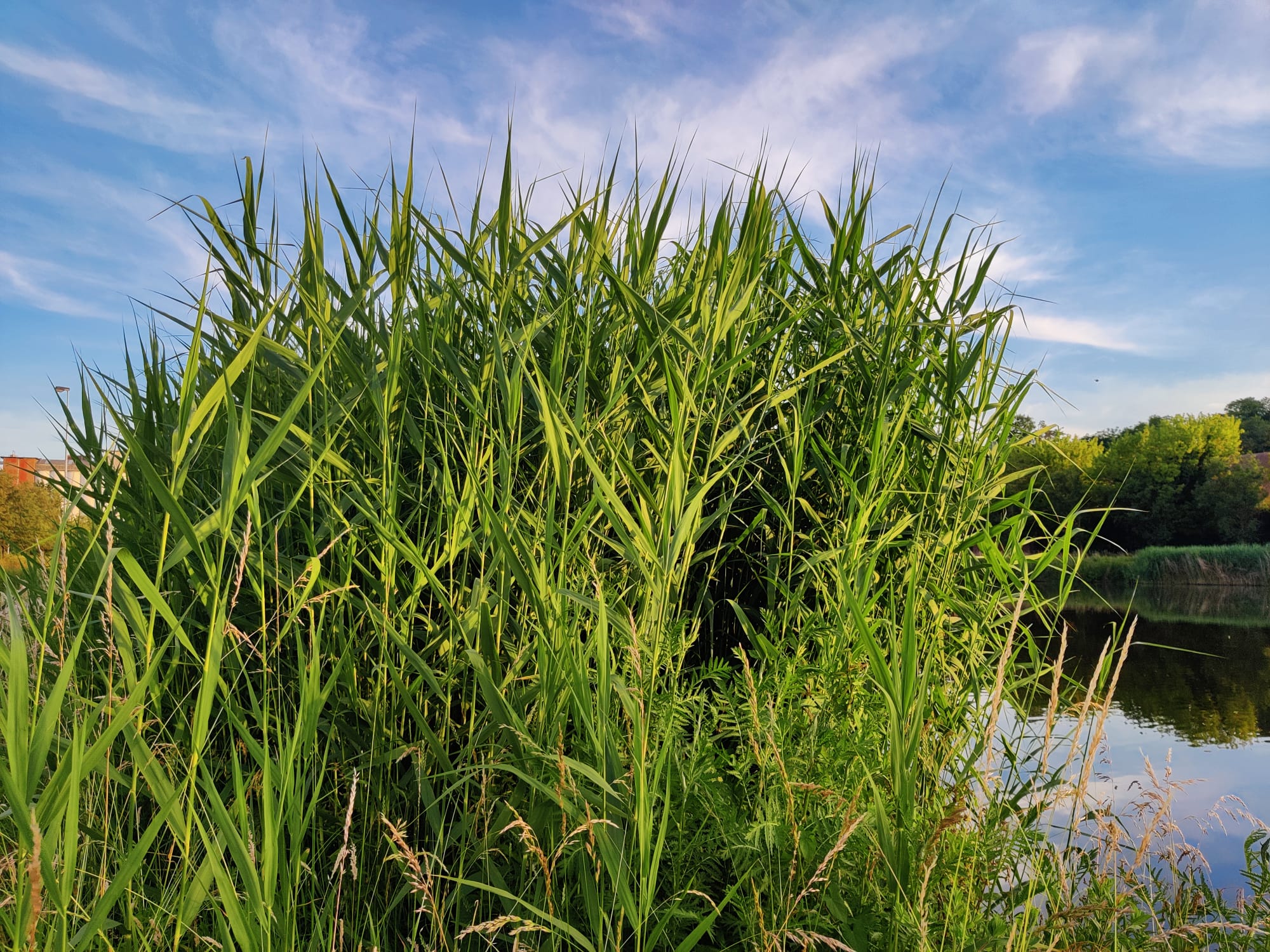
Figure 12:Common reed growing spontaneously on the banks of the canal “Vaart Leuven-Mechelen”.
Reed is the most common wetland plant worldwide, it can be found in Europe, Middle East and America. In Europe, reed is planted mainly in South Sweden, Austria and Estonia Köbbing et al., 2013. This crop has been used for centuries, either as fodder when harvested in summer, or for building material in thatching, paper production or insulation if harvested in winter Köbbing et al., 2013. Reed is a tall and thin grass that can reach 3 to 4 m high, the roots can grow very deep in the soil which makes the crop highly resistant to drought or water level fluctuations Bestman et al., 2019. The yield depends on climate, water supply, soil and nutrients and can reach up to 30 ton ha-1 yr-1 Köbbing et al., 2013, although yields of around 10 ton ha-1 yr-1 are more realistic Bestman et al., 2019. In winter, nutrients are stored in the roots, allowing more stable yields during winter. In summer, nutrients distribute to above-ground biomass. Reed performs better at high (+20 cm) or relatively lower water levels (-20 cm) Bestman et al., 2019. During the establishment phase, reed can be vulnerable to weeds and aquatic herbivores Geurts & Fritz, 2018.
Potential uses¶
According to Köbbing et al. (2013), potential uses for reed can be divided into industrial, energy, agricultural and environmental uses. Within industrial uses, thatching is probably the most traditional use of reed thanks to their durability, flexibility and sturdiness. For this purpose, moisture content has to be lower than 18 % and therefore harvesting is done in winter where the plant is already dry. Reed used to last from 50 to 100 years, but currently this has drop to maximum 30 years as result of pollution. Another industrial use is insulation materials for walls and roofs, and panels. Here, also the leaves and leftovers from thatching can be employed since the quality required is lower. Reed has a low thermal conductivity of (λ) of 0.055 W m-1K-1, which is not much inferior to traditional insulation materials, and provide a high volume-to weight ratio Bestman et al., 2019Köbbing et al., 2013, excellent to provide an appropriate interior climate. Further, reed pulp can be used for paper production thanks to the cellulose and hemicellulose present in reed biomass. However, this application is no longer explored in Europe due to insufficient reed supply and environmental reasons Köbbing et al., 2013.
In terms of energy uses, reed biomass can be used for combustion, biogas and biofuel production Köbbing et al., 2013. Winter-harvested reed with low moisture content is used for combustion and biofuel, while summer-harvested reed with high moisture is used for biogas. In winter, the nutrient and ash content in above-ground biomass is low, which is favorable against corrosion of equipment and emissions after combustion. The caloric value or energy present in reed biomass is around 14-17 MJ kg-1 Bestman et al., 2019Köbbing et al., 2013, similar to wood pellets. Reed biomass occupies large volume due to its low density, therefore, compressing into pellets or briquettes is important for easy transportation and less storage requirement. A processing at local scale is also preferred. For biogas (i.e. methane) production, fresh summer reed with high nutrient content is required, since the process involves anaerobic digestion by bacteria. The methane then serves for heat and electricity production. In biofuel production, glucose is extracted from reed cellulose after pre-treatments. This use is still in research Köbbing et al., 2013.
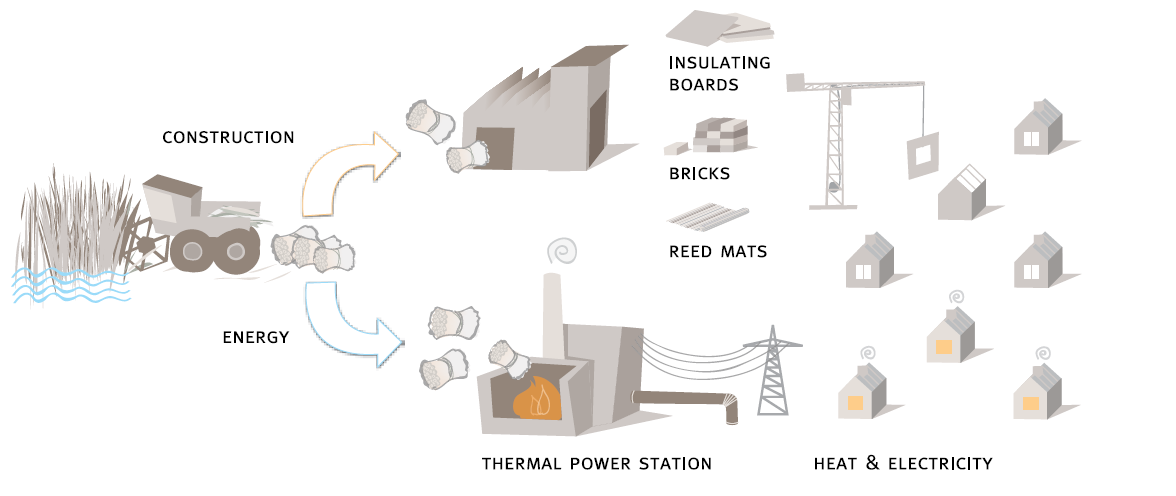
Figure 13:Energy cycle from cultivation to end-product for reed Greifswald Mire Center, 2015
Agricultural uses include fodder and fertilizers. Reed harvested in summer has a moderate crude protein content of around 60-115 g kg-1 DM Bestman et al., 2019, and high nitrogen, potassium and manganese content, which make reed a highly nutritious fodder for livestock Köbbing et al., 2013. Alternatively, winter-reed can be used as animal bedding. For using as fertilizer, reed is first chopped and composted together with garden waste to increase nitrogen content. Also, the remains from biogas production is ready available for plants Köbbing et al., 2013.
Reed can also offer environmental services such as water purification, water storage and peat conservation. These services can be easily combined with other productive uses. Reed production for fodder or biogas can also serve for purifying nutrient-polluted waters. For a yield of minimum 10 ton DM ha-1, carbon sequestration can be 4-14 ton C, and nutrient removal 150–600 kg N ha-1, 10–60 kg P ha-1, and 50–350 kg K ha-1 Geurts et al., 2020. Reed can promote peat formation and conservation when it grows over it. Since reed is highly resistant to flooded conditions, it can be also used along with water storage projects Bestman et al., 2019.
Limitations¶
Reed cultivation faces similar limitations as other paludicrops. Further research is still needed to optimize cultivation and nutrient dynamics for a long-term perspective of paludiculture. Additionally, some potential uses like paper production have been forgotten and cannot be explored again due to low supply. Some conflicts can also appear between nature conservation and energy production Becker et al., 2020.
Examples¶
- Biomass heating plant Malchin (Germany): Since 2014, reed and sedges from the rewetted meadows at lake Kummerow, Mecklenburg-Vorpommern, is used for heat production, which is used in the Malchin city.
Willow (Salix sp.)¶
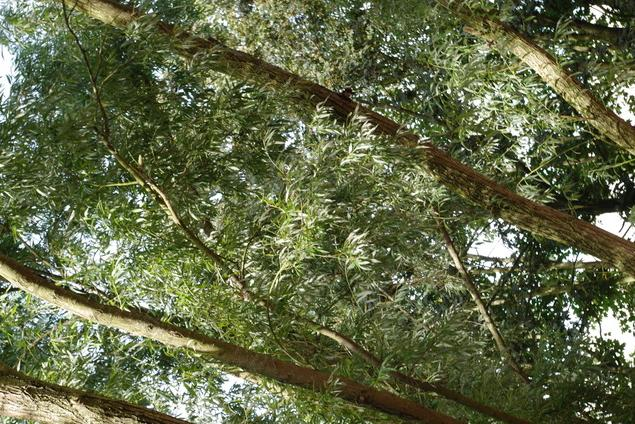
Figure 14:Willow tree. Source: Natuurpunt
Willow trees or shrubs are widespread in Flanders in the borders between land and water. There are many varieties and species, gradually more tolerant to diseases and with higher yields Natuurpunt, 2022Larsen et al., 2016. They can grow typically at flood zones along rivers or in nutrient-poor and moist areas. Willow can grow in water levels ranging from -40 to 20 cm, but lower water levels are preferred Collins et al., 2019. They can withstand short periods of flooding (less than 10 weeks), followed by dry period in which recovery can take place Bestman et al., 2019. The typical specie is white willow (salix alba), this can grow up to 20 m high Natuurpunt, 2022. Propagation is done with twigs cuttings of 20-30 cm and planting with a density of 16000 plant ha-1. Yields are on average 4.3 ton DM ha-1, which depends on the tree age, and can decrease if water levels are too high Bestman et al., 2019. Willow can be more advantageous than other wet crops since they can grow in poor soils Larsen et al., 2016.
Potential uses¶
More feasible uses for willow include agroforestry and other profitable uses like animal feed and water storage purposes. Twigs, young branches and green leaves can be used as food for cows, goats and sheep as they contain a crude protein content up to 190 g kg-1 DM, high selenium and zinc levels, which make willow good for roughage Bestman et al., 2019. Willow can also serve as shelter for free-range chickens to protect them against wind, rain, bright sunlight or predators Bracke et al., 2020. This is also beneficial for improving meat and egg quality and physical health of chickens. Other uses include wood fiber for energy production, due their high caloric value of 18 MJ kg-1 Bestman et al., 2019.
Willow can be grown in temporary water storage areas (i.e. in winter), as long as flooding periods are followed with dry periods Bestman et al., 2019. According to LIFE Peat Restore, willow can also serve as a buffer for wet nature and agricultural lands, to prevent negative effect from both sides, and also provide flowers for many pollinators such as solitary bees, honeybees and hoverflies. These environmental uses can be easily combined with productive uses.
Limitations¶
The major limitations are the lack of regulations, work complexity and lack of knowledge about managing the trees. Areas with willow trees can be identified as forest instead of agricultural land, which can devaluate its price. Also, weed control is required during establishment of willow, which increases initial investment costs Luske, 2014.
Examples¶
- AGFORWARD WP5 (The Netherlands): Willow for cattle and goats
- LEGCOMBIO (Belgium): Willow for chicken shelter
Business models¶
Table 3 describes some possible business models for Flanders involving paludiculture in rewetted areas, which are in research of already implemented in other countries. Further research is certainly needed.
Table 3:Possible business models in Flanders
Business model | Description | Pros/Cons | Source |
|---|---|---|---|
Cattle in wet meadows | Cattle adapted to wet conditions (i.e. water buffalo) for meat and milk production can be combined with paludiculture (e.g. reed) for animal feed or biofuel. | + Good for cattle farmers, who already have experience. Low investments in machinery. - Scientific support for monitoring water levels | Collins et al., 2019 |
Multi-purpose use of rewetted grasslands | Paludiculture and natural grassland can be used for compost, animal feed and building materials, combined with environmental services. | + Just minor changes in biomass harvesting. Biomass can serve for different applications according to the farmers’ choice. -Transport cost to compost plants are high. | Collins et al., 2019 |
Growing horticultural substrates | Suitable for raised bogs where sphagnum can be grown | + High demand for growing substrates and peat alternatives in the market. - High costs for adapted machinery or hydrological infrastructure. - Farmers should do market profitability research. | Collins et al., 2019 |
Nature conservation | Paludiculture can be used in buffer zones or nature areas for CO2 emissions reduction and biodiversity recovery. | + Several and important environmental services - Biomass cannot be harvested at any time, except for sphagnum. | Collins et al., 2019 |
Biomass for energy production | Paludicrops like cattail, miscanthus or reed can be used for combustion. | + Useful for low-quality biomass. - Heating plant has to be close to the farms. - Adaptation in machinery is required. | Collins et al., 2019 |
Agroforestry | Trees like willow adapted to wet conditions can provide food and shelter for animals. | + Several productive and environmental services that can be marketed to generate extra income and/or diversification. - Land price devaluation due to lack of regulations. |
Further research¶
The follow recommendations for further research in Flanders are based largely on Ziegler et al. (2021) and results of several pilot projects already exposed in The Netherlands and Germany.
- Look for collaboration with other companies and organizations who may be interested in testing and further developing paludiculture.
- Establish long-term pilots or demonstrations projects to explore the unique properties of wet crops and prove their viability in Flanders. These tests can also serve to calibrate crop models for these wet crops.
- Adopt the stakeholder participation approach in research projects and new initiatives from the beginning, in order to include their needs and knowledge, to rise awareness about climate change, and to create a new culture of sustainable farming.
- Use the business models implemented of other countries as an example to create adapted revenue models for Flanders. Explore also other business models suitable for rewetted lands like the use of grass in wet conditions for energy production or compost.
- Make an economical study of the most fitting paludicrops, from cultivation to the end-use product, for directing interested parties on a transition to “wet agriculture”, and encouraging them to make that transition.
- Develop incentives and policies to stimulate paludiculture investments and more diverse applications, which in turn will increase revenues. Subsidies and payments for ecosystem services (e.g. carbon credits) and services related to wetlands should be implemented.
- De La Haye, A., Devereux, C., & Herk, S. (2021). Peatlands across Europe: Innovation and Inspiration | [Techreport]. Bax & Company. http://www.decadeonrestoration.org/es/node/4649
- IUCN. (2021). Peatlands and climate change. https://www.iucn.org/resources/issues-briefs/peatlands-and-climate-change
- Wichtmann, W., Schröder, C., & Joosten, H. (2016). Paludiculture - productive use of wet peatlands. https://www.schweizerbart.de/publications/detail/isbn/9783510652839,%20https://www.sciencedirect.com/science/article/abs/pii/S0925857416301677
- Kaur, G., Singh, G., Motavalli, P. P., Nelson, K. A., Orlowski, J. M., & Golden, B. R. (2020). Impacts and management strategies for crop production in waterlogged or flooded soils: A review. Agronomy Journal, 112(3), 1475–1501. 10.1002/agj2.20093
- Moore, G. A., Agriculture Western Australia, & National Landcare Program (W.A.). (1998). Soilguide: a handbook for understanding and managing agricultural soils. Agriculture Western Australia.
